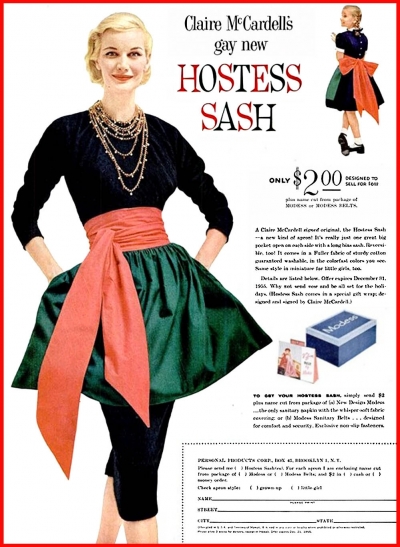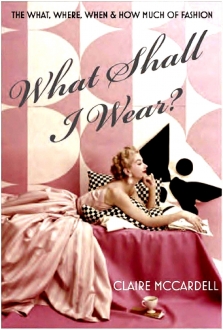The old adage about dress hemlines serving as reliable economic indicators (you can read about it on Wikipedia) certainly did not ring true for the United States during the post-war era when prosperity sent the stock market to new highs and the hemlines dropped 12 inches. This fashion revolt commenced in Paris, when Christian Dior showed his first collection in 1947 - couturiers in every style capitol in the West willingly kowtowed and a new era in fashion was born. With this abundance in wealth came the compulsion to throw parties - which in turn required the booming fashion industry to meet the new fashion requisites created by the nations new hostess class. Among the many American designers who stepped up to meet this challenge was Claire McCardell (1905 – 1958).
The new affluence was also felt in the publishing world: the bookshops of the Fifties dispensed the musings of numerous savvy authors from the sophistication-industry who wrote about cocktails, barbecuing, and decorating - subjects that heretofore had never had such a broad readership.

From Amazon, a terrific well-illustrated book about the consumer culture of the Fifties: Populuxe
- for further reading:
